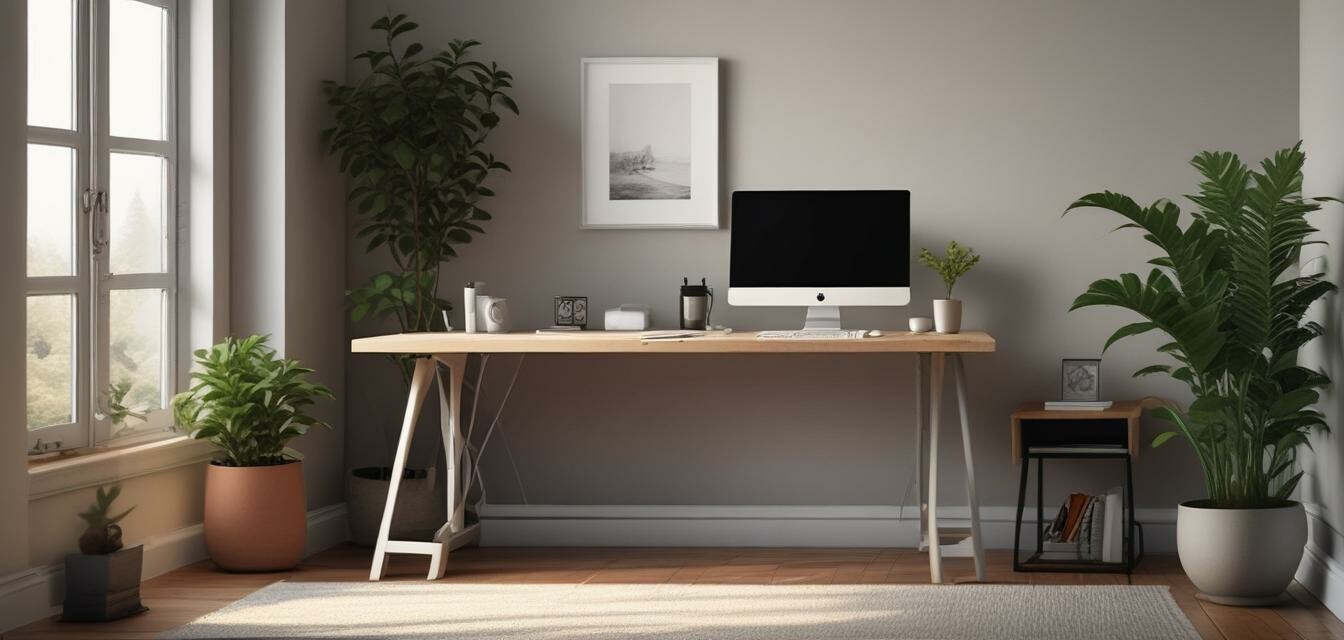
How to Select a Standing Desk for Home Use
- Understand the various types of standing desks available.
- Consider your workspace dimensions and layout.
- Pay attention to adjustability features for ideal ergonomics.
- Look for added features like cable management and storage solutions.
- Evaluate your budget while balancing quality and functionality.
Choosing the right standing desk for your home office can significantly enhance your work experience and overall productivity. With a multitude of options available, it's essential to assess your specific needs and preferences. This guide will walk you through the key factors to consider when selecting a standing desk that complements your work style and space.
Types of standing desks
Standing desks come in various forms, each catering to different preferences and requirements. Below are the most popular types:
| Type of Desk | Description |
|---|---|
| Manual crank desks | These desks require you to manually adjust the height using a crank mechanism. |
| Electric standing desks | These desks allow you to adjust the height with the push of a button, making them more convenient. |
| Convertible desks | These desks can transition from sitting to standing positions, offering the flexibility you need. |
| Wall-mounted desks | These desks can be affixed to a wall, saving space while providing a sturdy work surface. |
Space and layout considerations
Before finalizing a standing desk, assess your workspace. These factors include:
- Available area: Measure the space in your home office to ensure it can accommodate a standing desk without crowding.
- Desk height: Consider the height of the desk in relation to your body for optimal comfort.
- Distance from walls: Make sure there's enough room around the desk for ease of movement.
Ergonomics and adjustability
Ergonomics is crucial in a home office setup to prevent strain and promote comfort. Here’s what to look for:
- Height adjustability: The desk should have a wide height range to cater to different users.
- Keyboard tray: A separate adjustable keyboard tray can help maintain a neutral wrist position.
- Monitor height adjustment: Ensure your monitor can be positioned at eye level to reduce neck strain.
Additional features to consider
When selecting a standing desk, some extra features can enhance your experience:
- Cable management: Built-in cable management systems can keep your workspace tidy.
- Storage solutions: Drawers or shelves can help organize office supplies.
- Stability: Look for desks with a sturdy base to maintain stability in all positions.
Budget considerations
Budgeting for a standing desk is essential. Here are some tips:
- Set a clear budget range based on your needs.
- Compare options within your budget to find the best quality and features.
- Keep an eye out for sales and promotions on standing desks to make the most of your investment.
Final thoughts
Investing in a quality standing desk can improve your productivity and make your home office more comfortable. With various options available, it’s essential to consider your specific needs, budget, and workspace. By following the guidelines outlined in this article, you'll be well-equipped to find the perfect standing desk that enhances your work experience.
Pros
- Encourages a healthier work posture.
- Reduces the risk of sedentary lifestyle-related issues.
- Offers flexibility in workspace design.
- Can enhance productivity with comfortable setups.
Cons
- Some standing desks can be expensive.
- Adjustable models may require maintenance.
- Standing for long periods can lead to fatigue.
- May require additional accessories for optimal ergonomics.
Explore more on office furniture
For more insights on equipping your home office, check out our other buying guides:
